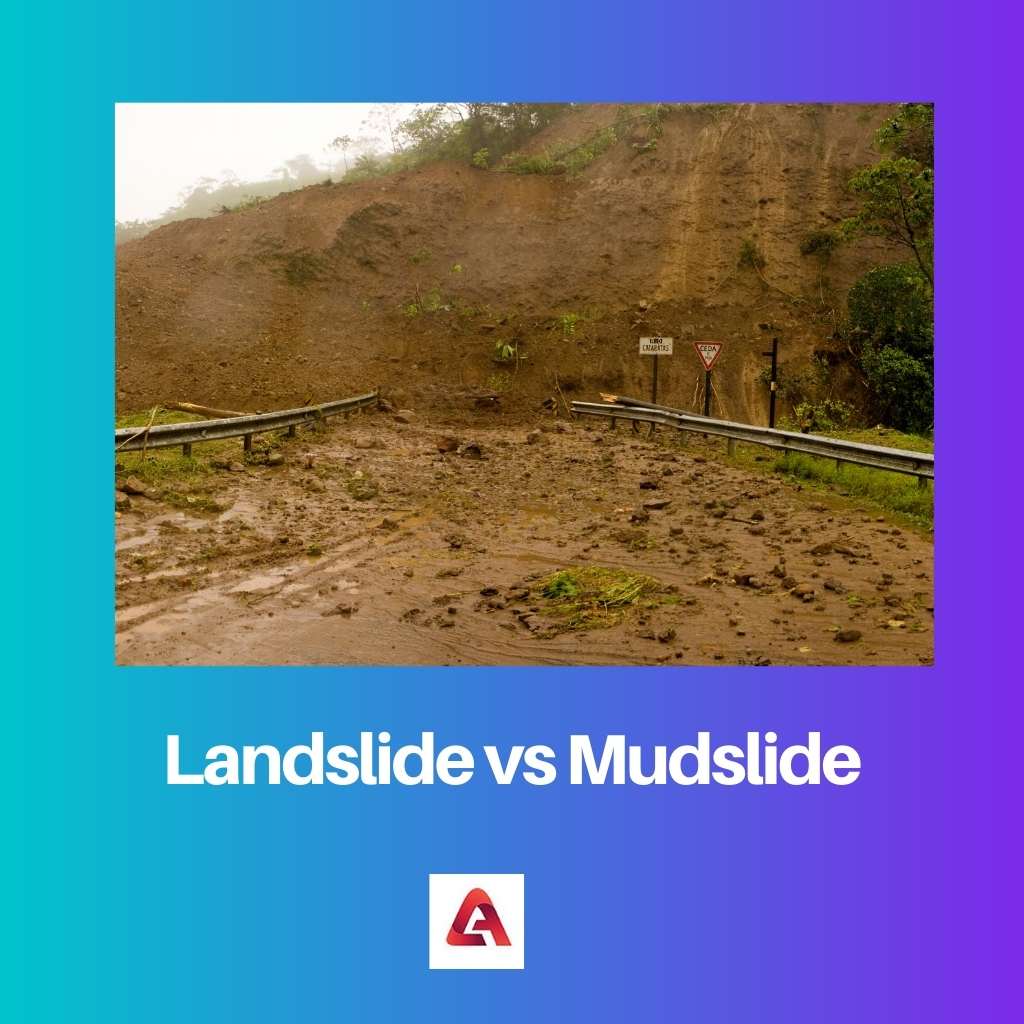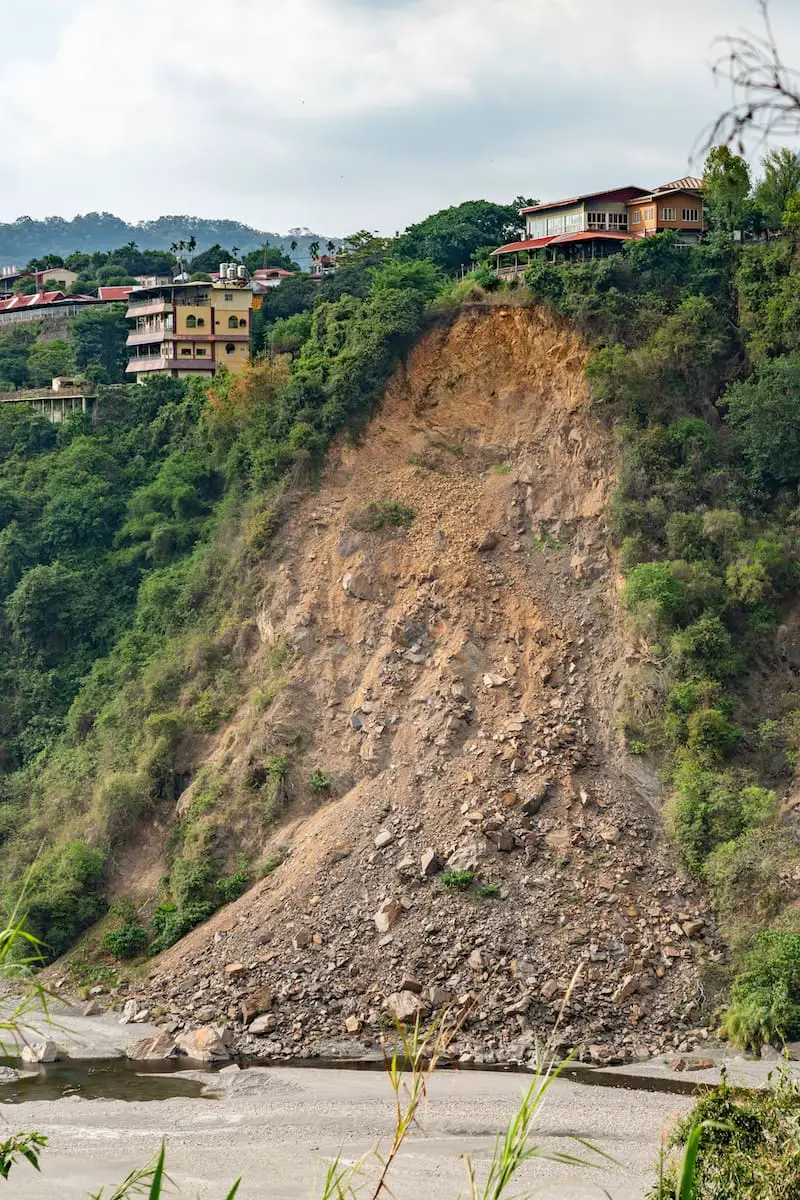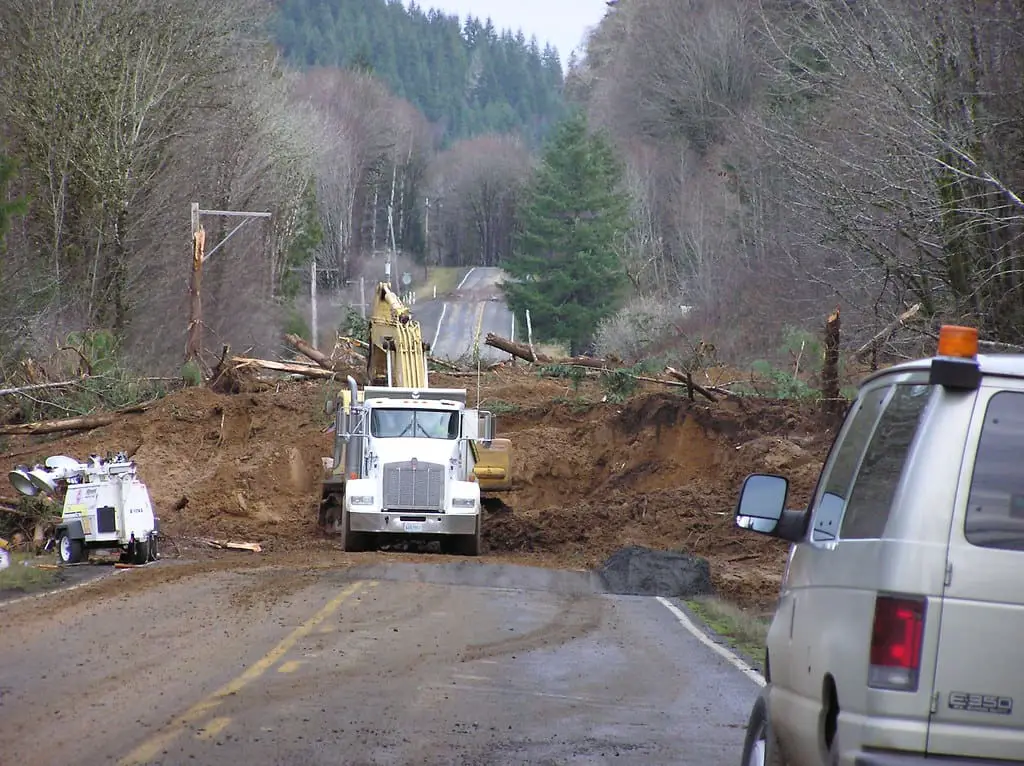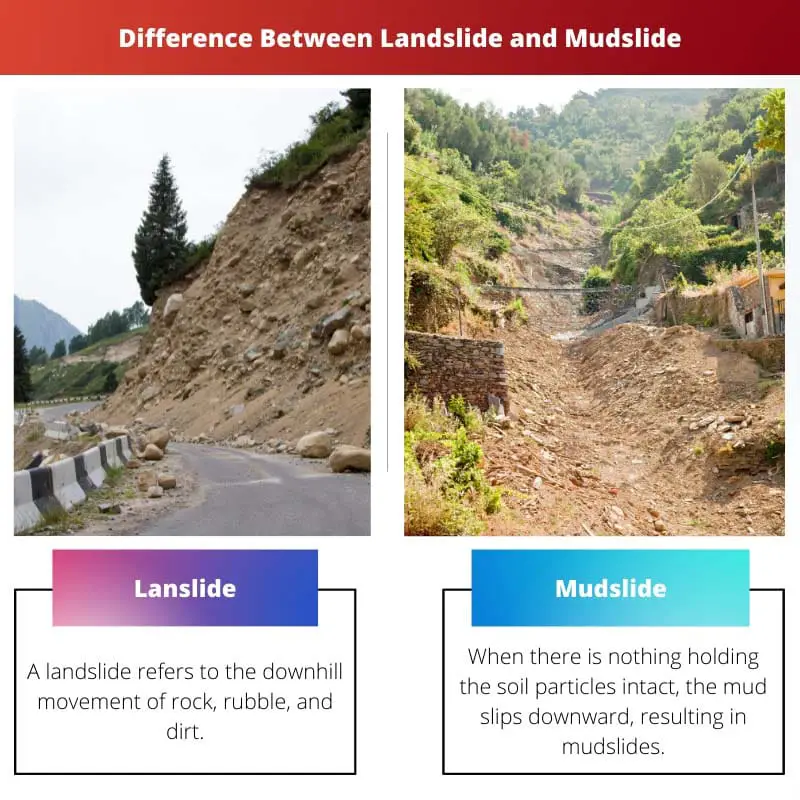Landslides and mudslides are types of mass wasting that can be very destructive. The flow of rocks or soil downhill due to gravity is called mass wasting.
Frequently lubricated by rainwater or disturbed by seismic activity, these occurrences can occur extremely quickly and usually travel like a flow.
Key Takeaways
- Landslides involve the movement of rock, earth, or debris down a slope due to gravity.
- Mudslides are a type of landslide where a large mass of wet, liquefied soil moves downhill.
- Both are natural disasters involving the movement of materials, but mudslides specifically involve saturated soil.
Landslide vs Mudslide
Heavy rainfall, earthquakes, volcanic activity, and human activities cause landslides. Mudslides involve moving a large amount of mud or wet soil down a slope or hillside due to heavy rainfall, rapid snowmelt, or other factors.

A landslide refers to the downhill movement of rock, debris, and soil. Landslides can occur on every type of surface, whether sandy or rocky.
It happens not only on land but can also happen underwater. There are many reasons for landslides, some natural and some man-made.
Mudslides, also known as debris flows, occur on steep slopes worldwide when rain or melting snow saturates the earth, making everything unstable.
Earthquakes or other natural calamities can generate them, but gravity most induces them. Clay-type soil particles are common in mudslides, while other types can be found in glaciers and volcanic eruptions.
Comparison Table
| Parameters of Comparison | Landslide | Mudslide |
|---|---|---|
| Definition | A landslide refers to the downhill movement of rock, rubble, and dirt. | It can be any size, ranging from huge rocks to microscopic clay particles. |
| Particles involved | A lot of water is mixed with the soil | Clay, like very fine particles |
| Water present in flow | Sometimes | Water present in the flow |
| Speed of movement | Speed gradually increases. | Quick. |
| Flows in channels | It does not follow any specific channel. | The debris flows in specific channels |
| Cause | Heavy rainfall, snowfall, earthquakes, volcanic activity, and human activities such as mining, construction activities, heavy machinery, and deforestation are all causes of environmental disasters. | When the soil on steep slopes gets too soaked from rain or melting snow. |
What is Landslide?
The movement of a mass of rock, rubble, or dirt downhill is described as a landslide. Landslides are a sort of “mass wasting,” which refers to any downward-slope displacement of soil and rock caused by gravity.
The term “landslide” refers to five different types of slope movement. This includes rock falls, topples, slides, spreads, and flows. These are categorised further based on the sorts of geologic elements they include.
Almost every landslide is caused by a combination of factors, including both natural and anthropogenic ones.
Slope run-off occurs when forces, gravity, pushing downslope exceed the forces of the earth’s components that hold them together.
Causes include those that enhance the influence of downslope forces and those that result in weak or reduced strength.
Heavy precipitation, snow runoff, variations in water levels, channel erosion, changes in groundwater level, seismic and volcanic activities, anthropogenic disruptions, or any combo of these factors can cause landslides to arise on slopes that are already unstable.
Earthquake shaking and other reasons can potentially cause underwater landslides. Submarine landslides are the name given to these landslides. Tsunamis are occasionally caused by submarine landslides, causing devastation to coastal regions.

What is Mudslide?
One of the most common causes of mudflows is heavy rainfall brought on by tropical storms or cyclonic fronts. Water saturation occurs on the soil, and subsequent rainfall loosens smaller particles.
Water acts as a lubricant between tiny particles and the grains of the earth. Soaked soil might eventually break free. This commonly results in mudslides in areas of the world with clay slopes.
Boulders embedded in the soil can break free and slide down the hill.
Mudslides can occur on any slope. Erosion plays an important role, but the hillsides that are burned and cleared of vegetation by natural or man-made fire are especially vulnerable.
When trees burn, their roots eventually die, leaving little anchorage to the soil. Heavy rains can create conditions that are conducive to the occurrence of mudslides. Mudslides can also occur because of glacier melt and volcanic activity.
Mudslides start small, but they can quickly expand tenfold as the debris scours the bottom and sides, gathering additional dirt, water, rocks, trees, and everything else in their path.
The mud can flow at a velocity of 20 miles per hour before spreading out as it reaches flatter land and slows down.

Main Differences Between Landslides and Mudslides
- A landslide is a natural catastrophe when rock, mud, water, or anything else trapped in the route breaks up and flows downward. Mudslides are natural calamities in which soil mixed with water flows down a slope.
- Seismic and volcanic activities, changes in groundwater levels, or any disturbance or change in slope are all causes of landslides, unlike mudslides, which occur when wildfires have burned a lot of rain or vegetation.
- A landslide is associated with a geological event. Mudslides are associated with extreme weather events.
- Landslides do not contain a considerable volume of water. Mudslides are always accompanied by large amounts of water mixed in with the pouring earth.
- A landslide can occur gradually. A mudslide is a quick and unexpected event.






